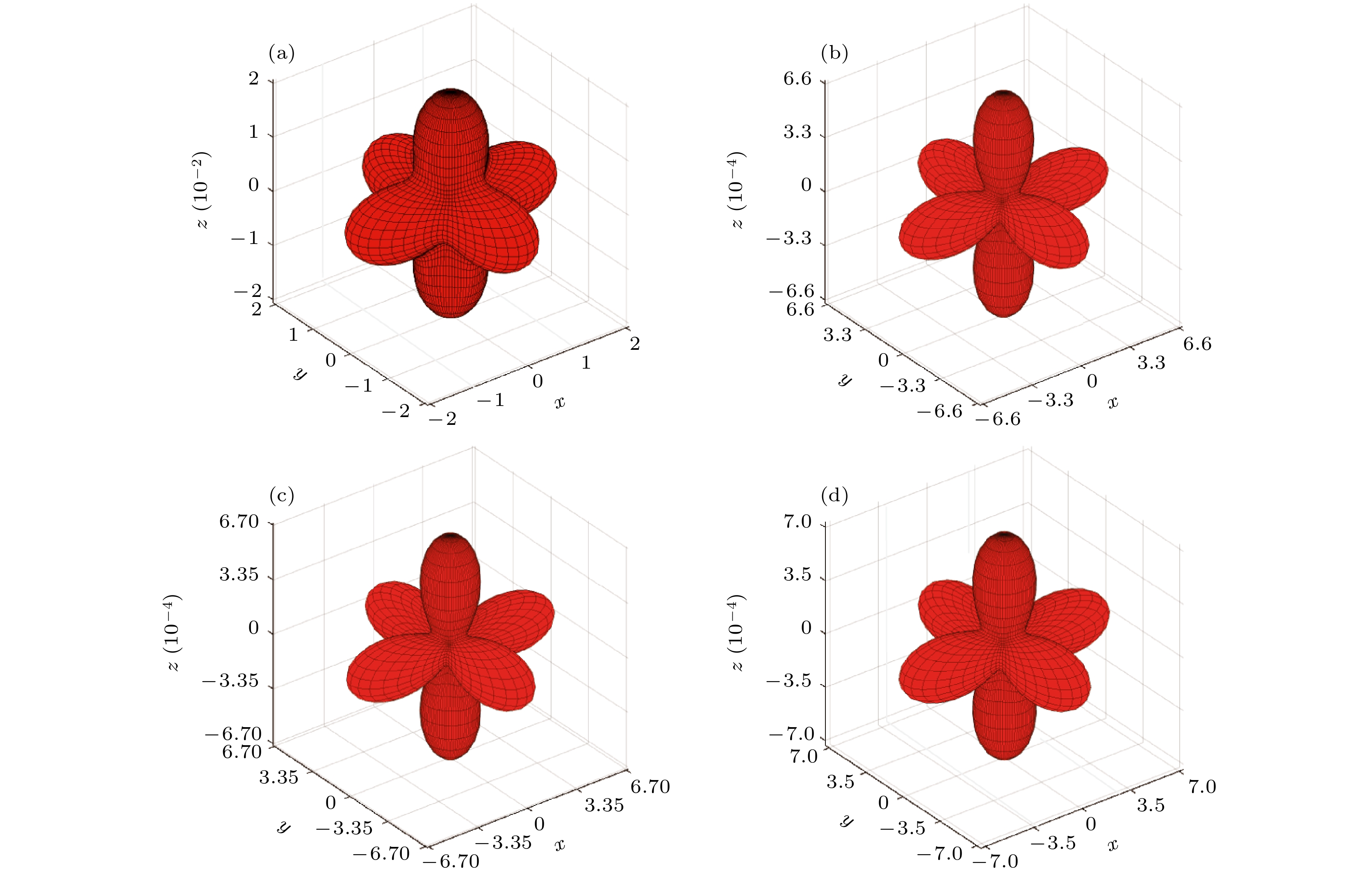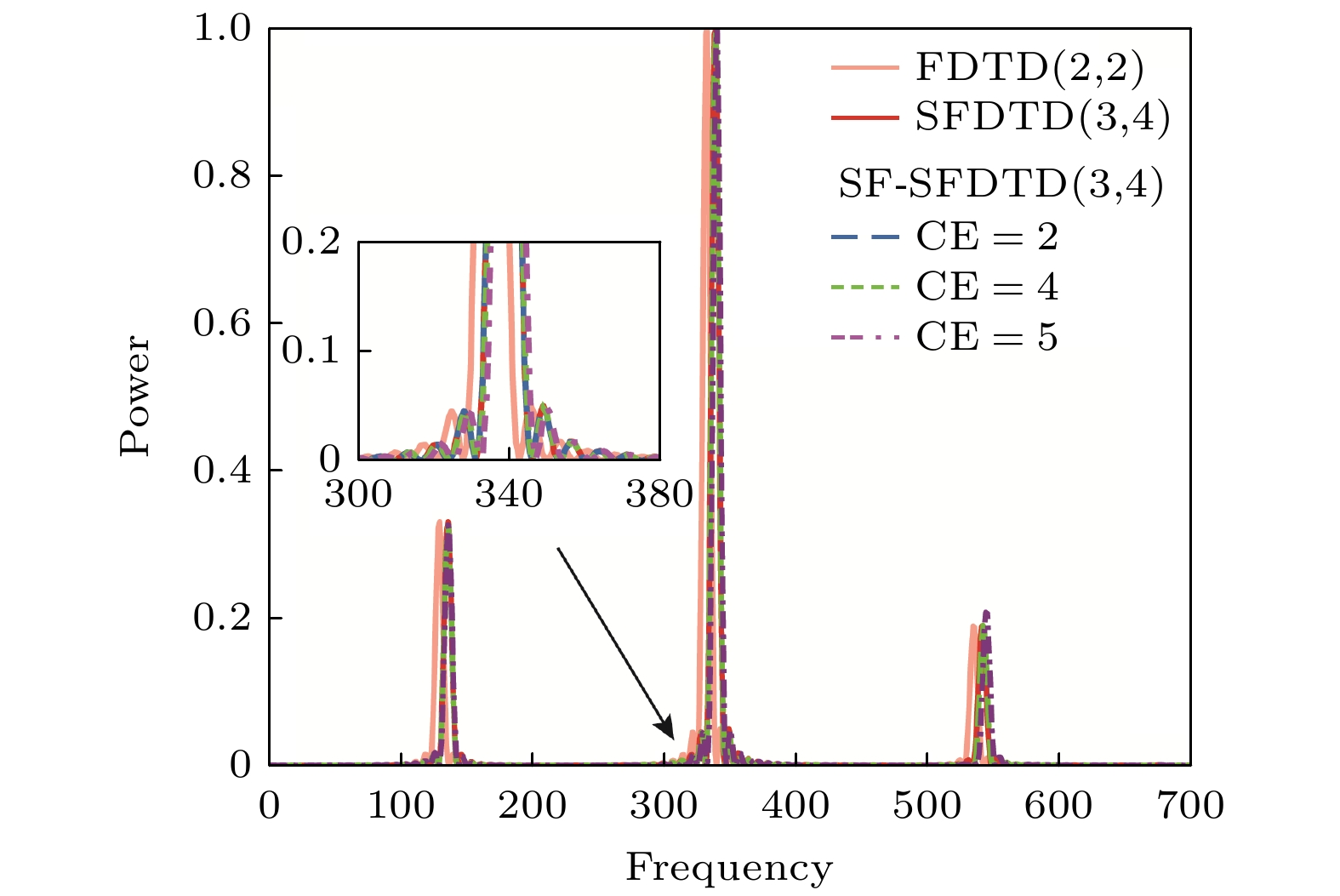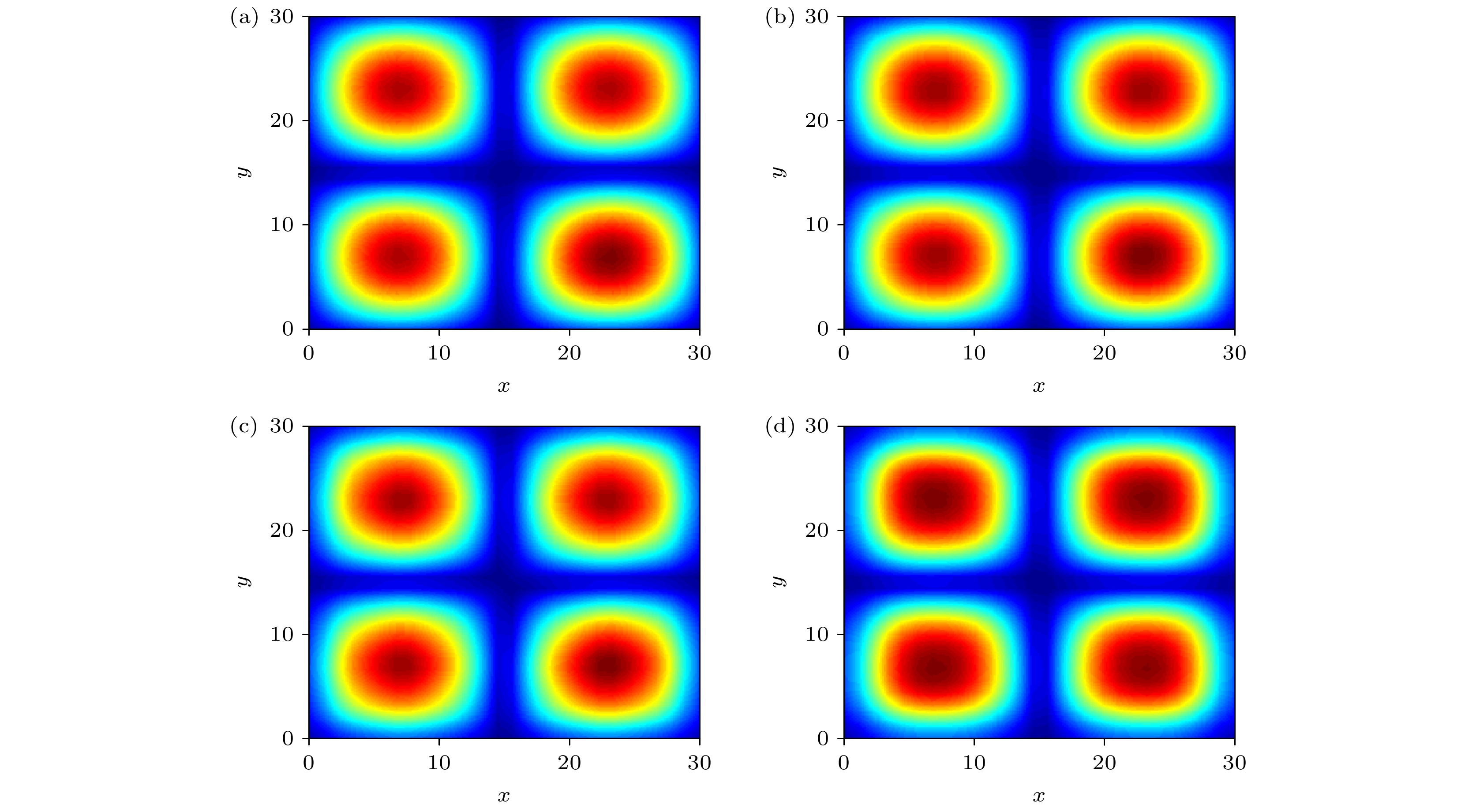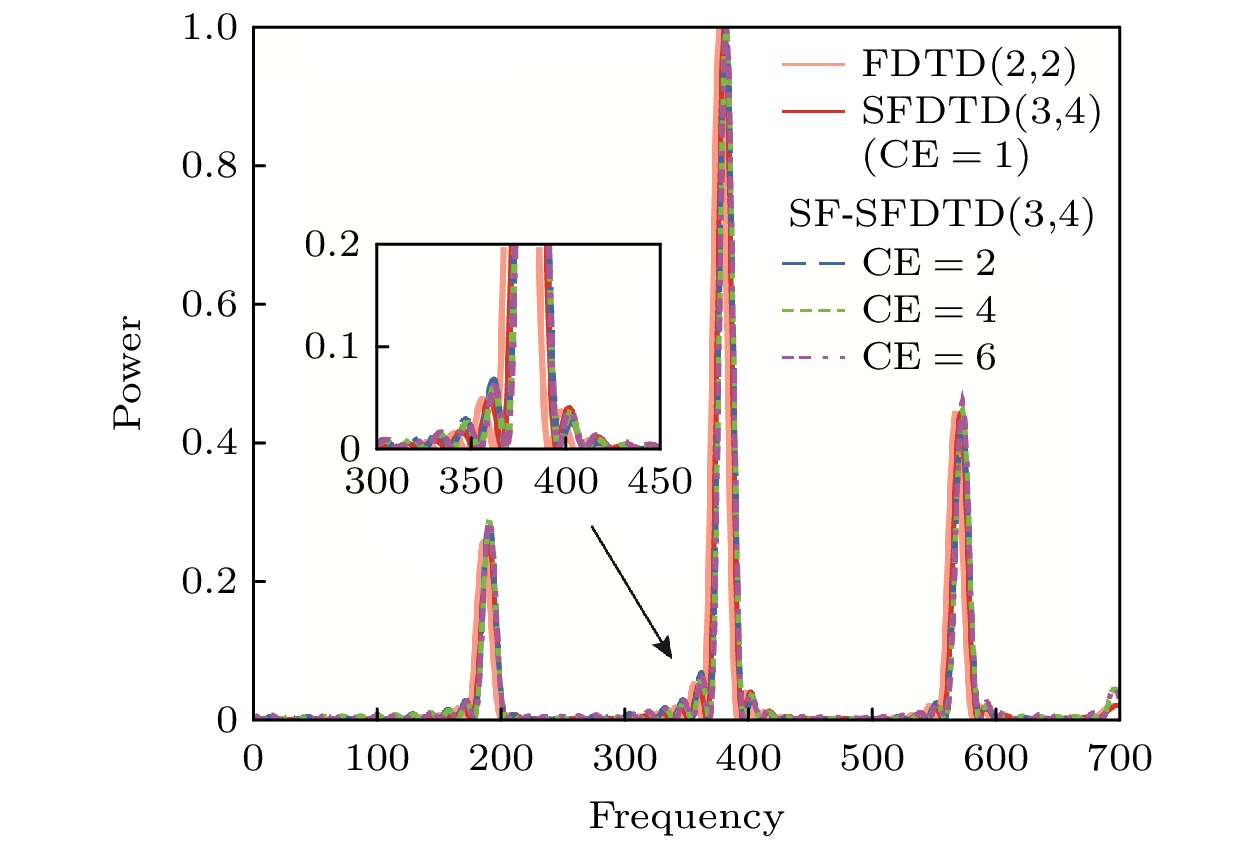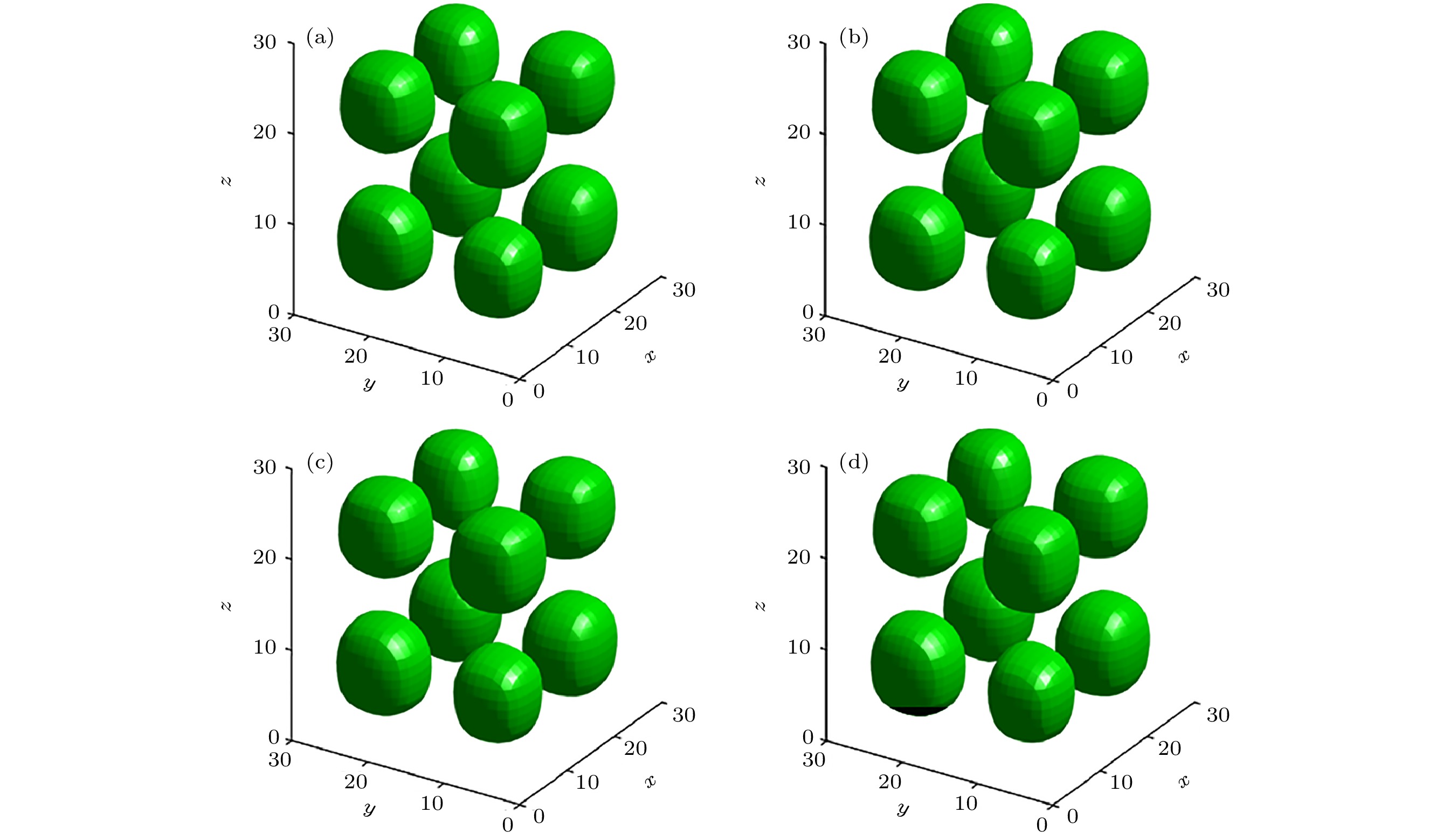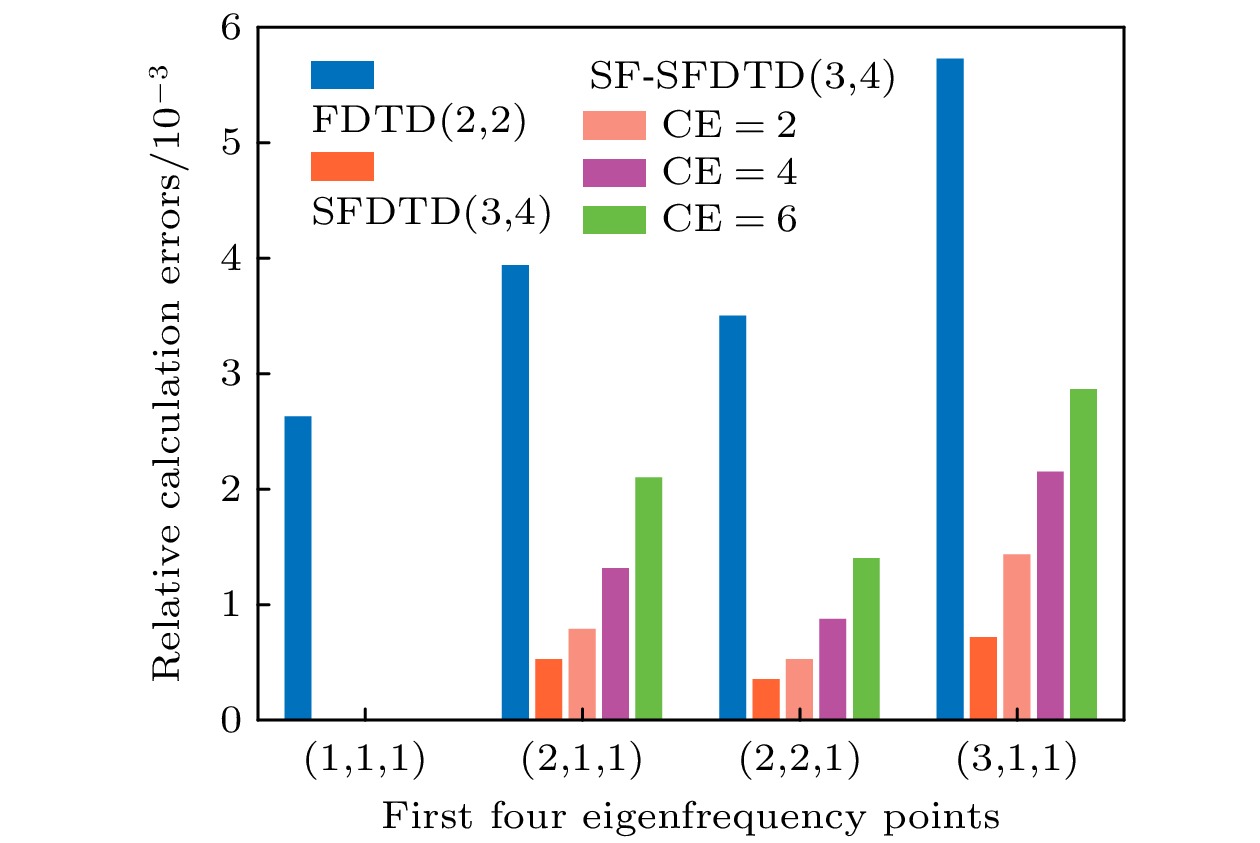-
The traditional finite-difference time-domain (FDTD (2, 2)) method with second-order numerical accuracy in time and space has been extensively employed in the field of quantum mechanics to solve the Schrödinger equation. Nevertheless, the presence of the Courant-Friedrichs-Lewy (CFL) condition imposes limitations on the grid size in the computational space, thereby constraining the admissible range of time steps. Accordingly, the efficiency of the FDTD(2, 2) method significantly decreases. In addition, the second-order numerical accuracy of the FDTD(2, 2) method both in time domain and in space domain often results in significant error accumulation during calculations, thereby undermining the fidelity of the simulation results. To surmount the constraints imposed by the CFL stability conditions and enhance the accuracy of computations, a novel approach termed SF-SFDTD(3, 4) method has been proposed, with 3 and 4 referring to the accuracy in space and time, respectively. This method combines spatial filtering (SF) with the high-order symplectic finite-difference time-domain (SFDTD) method. Its primary objective is to solve the time-dependent Schrödinger equation while ensuring time stability and scalability. The SF-SFDTD(3, 4) method obviates the need for further deriving the iterative formula employed in the conventional SFDTD(3, 4) method. Therefore, the method under consideration exhibits a remarkable degree of compatibility with its traditional counterpart. It is merely necessary to include a spatial filtering operation during each numerical iteration to eliminate spatial high-frequency components arising from the utilization of time step sizes that fail to satisfy the CFL stability condition, thereby ensuring the stability of the numerical scheme. Moreover, when the time step value satisfies the CFL stability condition, the amplitude of the high-frequency component approaches zero, thereby exerting a minimal influence on the accuracy of the computational results. The adoption of time steps that do not meet the CFL stability conditions leads to an amplification in the amplitude of the high-frequency component. However, this finding solely affects the stability of the computational results, and the elimination of these unstable high-frequency components scarcely affect the accuracy of the computational results. The SF-SFDTD(3, 4) retains the simplicity and efficacy inherent in the traditional SFDTD(3, 4) methods, while enhancing computational efficiency. Additionally, the numerical stability and dispersion error of the SF-SFDTD(3, 4) method are analyzed theoretically. Finally, the validity and efficacy of the proposed method are corroborated through numerical illustrations.
-
Keywords:
- symplectic finite-difference time-domain method /
- spatial filtering /
- time stability condition /
- Schrödinger equation
[1] Jin J M 2010 Theory and Computational of Electromagnetic Fields (Hoboken, NJ, USA: Wiley
[2] Harrington R F 1968 Field Computation by Moment Methods (New York: Macmillan
[3] Feng B, Chen J, Chung K L, Wang L, Li Y 2022 IEEE Trans. Antennas Propag. 70 3058
 Google Scholar
Google Scholar
[4] Manoufali M, Mobashsher A T, Mohammed B, et al. 2020 IEEE Trans. Biomed. Circuits Sys. 14 452
 Google Scholar
Google Scholar
[5] Schwierz F 2010 Nat. Nanotechnol. 5 487
 Google Scholar
Google Scholar
[6] Russer P, Fichtner N, Lugli P, Porod W, Russer J A, Yordanov H 2010 IEEE Microwave Mag. 11 58
 Google Scholar
Google Scholar
[7] Datta S 2005 Quantum Transport: Atom to Transistor (New York: Cambridge University Press
[8] Joe Y S, Satanin A M, Kim C S 2006 Phys. Scr. 74 259
 Google Scholar
Google Scholar
[9] Griffiths D J 2004 Introduction to Quantum Mechanics (2nd Ed.) (Boston: Addison-Wesley
[10] Soriano A, Navarro E A, Portì J A, Such V 2004 J. Appl. Phys 95 8011
 Google Scholar
Google Scholar
[11] Sullivan D M, Citrin D S 2005 J. Appl. Phys. 97 104305
 Google Scholar
Google Scholar
[12] Zhu M, Wang Y 2020 2020 Cross Strait Radio Science & Wireless Technology Conference (CSRSWTC), Fuzhou, China, October 11–14, 2020 p1
[13] Decleer P, Van Londersele A, Rogier H, Vande Ginste D 2021 J. Comput. Appl. Math. 381 113023
 Google Scholar
Google Scholar
[14] 沈晶, 沙威, 黄志祥, 陈明生, 吴先良 2012 物理学报 61 190202
 Google Scholar
Google Scholar
Shen J, Sha Wei E I, Huang Z X, Chen M S, Wu X L 2012 Acta Phys. Sin. 61 190202
 Google Scholar
Google Scholar
[15] Taflove A, Hagness S C 2005 Computational Electrodynamics: the Finite-Difference Time-Domain Method (3rd Ed.) (Boston: Artech House
[16] Sarris C D 2011 IEEE Microwave Wireless Compon. Lett. 21 176
 Google Scholar
Google Scholar
[17] Chang C, Sarris C D 2013 IEEE Trans. Microwave Theory Tech. 61 351
 Google Scholar
Google Scholar
[18] Gao Y J, Zhang J H, Yao Z X 2019 J. Comput. Phys. 397 108853
 Google Scholar
Google Scholar
[19] Decleer P 2018 M. S. Thesis (Ghent: Ghent University
[20] Cao Q, Chen Y, Mittra R 2002 IEEE Trans. Microwave Theory Tech. 50 1578
 Google Scholar
Google Scholar
-
图 4 FDTD(2, 2), SFDTD(3, 4)和SF-SFDTD(3, 4)方法的数值色散误差 (a) FDTD(2, 2)(CE = 1); (b) SFDTD(3, 4)(CE = 1); (c) SF-SFDTD(3, 4)(CE = 5); (d) SF-SFDTD(3, 4)(CE = 10)
Figure 4. Curves of numerical dispersion error for the FDTD(2, 2), SFDTD(3, 4) and SF-SFDTD(3, 4) method: (a) FDTD(2, 2)(CE = 1); (b) SFDTD(3, 4)(CE = 1); (c) SF-SFDTD(3, 4)(CE = 5); (d) SF-SFDTD(3, 4)(CE = 10).
表 1 SFDTD(3, 4)和SF-SFDTD(3, 4)方法数值求解二维薛定谔方程的运行时间
Table 1. Execution time(s) for SFDTD(3, 4) and SF-SFDTD(3, 4) methods for solving two-dimensional Schrödinger equation.
计算方法 CE 迭代步数 运行时间/s SFDTD(3, 4) 1 40000 7.78 SF-SFDTD(3, 4) 2 20000 16.18 SF-SFDTD(3, 4) 4 10000 7.98 SF-SFDTD(3, 4) 5 8000 4.51 表 2 SFDTD(3, 4)和SF-SFDTD(3, 4)方法数值求解三维薛定谔方程的运行时间的运行时间
Table 2. Execution time(s) for SFDTD(3, 4) and SF-SFDTD(3, 4) methods for solving three-dimensional Schrödinger equation.
计算方法 CE 迭代次数 运行时间/s SFDTD(3, 4) 1 30000 117.37 SF-SFDTD(3, 4) 2 15000 231.15 SF-SFDTD(3, 4) 4 7500 121.20 SF-SFDTD(3, 4) 6 5000 79.40 -
[1] Jin J M 2010 Theory and Computational of Electromagnetic Fields (Hoboken, NJ, USA: Wiley
[2] Harrington R F 1968 Field Computation by Moment Methods (New York: Macmillan
[3] Feng B, Chen J, Chung K L, Wang L, Li Y 2022 IEEE Trans. Antennas Propag. 70 3058
 Google Scholar
Google Scholar
[4] Manoufali M, Mobashsher A T, Mohammed B, et al. 2020 IEEE Trans. Biomed. Circuits Sys. 14 452
 Google Scholar
Google Scholar
[5] Schwierz F 2010 Nat. Nanotechnol. 5 487
 Google Scholar
Google Scholar
[6] Russer P, Fichtner N, Lugli P, Porod W, Russer J A, Yordanov H 2010 IEEE Microwave Mag. 11 58
 Google Scholar
Google Scholar
[7] Datta S 2005 Quantum Transport: Atom to Transistor (New York: Cambridge University Press
[8] Joe Y S, Satanin A M, Kim C S 2006 Phys. Scr. 74 259
 Google Scholar
Google Scholar
[9] Griffiths D J 2004 Introduction to Quantum Mechanics (2nd Ed.) (Boston: Addison-Wesley
[10] Soriano A, Navarro E A, Portì J A, Such V 2004 J. Appl. Phys 95 8011
 Google Scholar
Google Scholar
[11] Sullivan D M, Citrin D S 2005 J. Appl. Phys. 97 104305
 Google Scholar
Google Scholar
[12] Zhu M, Wang Y 2020 2020 Cross Strait Radio Science & Wireless Technology Conference (CSRSWTC), Fuzhou, China, October 11–14, 2020 p1
[13] Decleer P, Van Londersele A, Rogier H, Vande Ginste D 2021 J. Comput. Appl. Math. 381 113023
 Google Scholar
Google Scholar
[14] 沈晶, 沙威, 黄志祥, 陈明生, 吴先良 2012 物理学报 61 190202
 Google Scholar
Google Scholar
Shen J, Sha Wei E I, Huang Z X, Chen M S, Wu X L 2012 Acta Phys. Sin. 61 190202
 Google Scholar
Google Scholar
[15] Taflove A, Hagness S C 2005 Computational Electrodynamics: the Finite-Difference Time-Domain Method (3rd Ed.) (Boston: Artech House
[16] Sarris C D 2011 IEEE Microwave Wireless Compon. Lett. 21 176
 Google Scholar
Google Scholar
[17] Chang C, Sarris C D 2013 IEEE Trans. Microwave Theory Tech. 61 351
 Google Scholar
Google Scholar
[18] Gao Y J, Zhang J H, Yao Z X 2019 J. Comput. Phys. 397 108853
 Google Scholar
Google Scholar
[19] Decleer P 2018 M. S. Thesis (Ghent: Ghent University
[20] Cao Q, Chen Y, Mittra R 2002 IEEE Trans. Microwave Theory Tech. 50 1578
 Google Scholar
Google Scholar
Catalog
Metrics
- Abstract views: 5553
- PDF Downloads: 241
- Cited By: 0















 DownLoad:
DownLoad:


